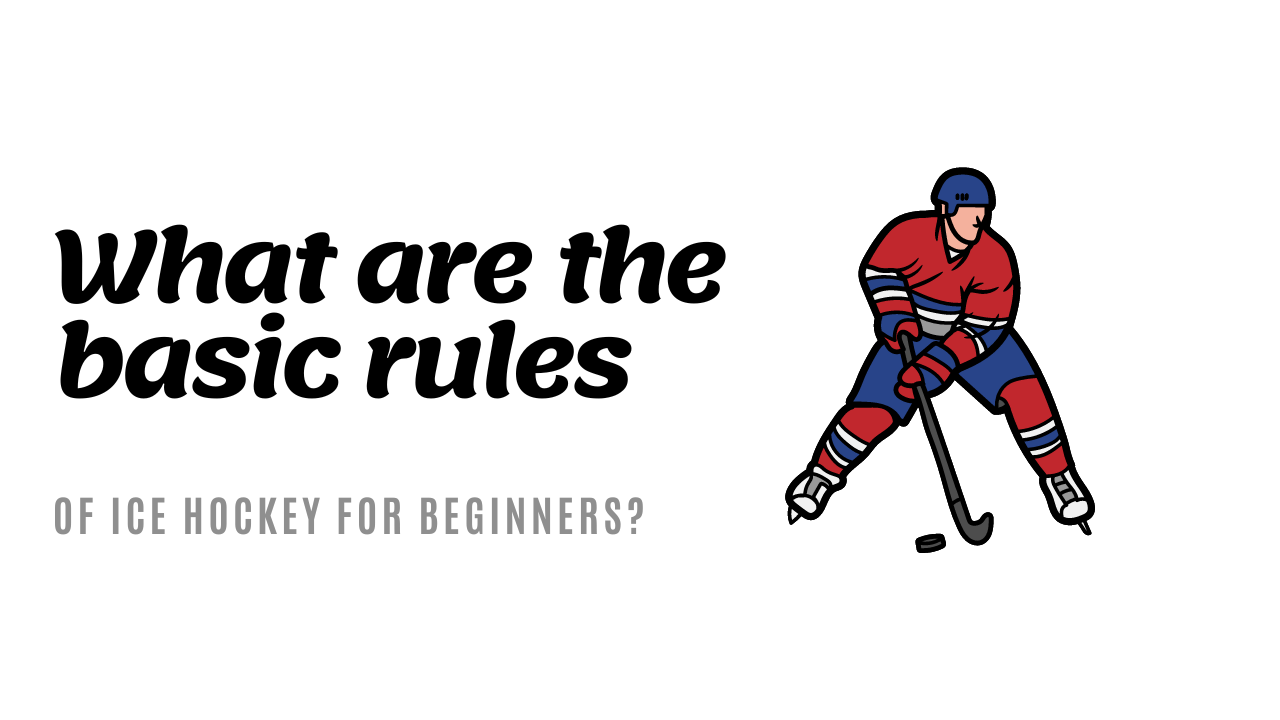Ice hockey is a fast-paced and exciting sport that combines speed, skill, and teamwork. If you’re new to the game, understanding the basic rules can enhance your viewing experience or get you started playing.
This guide provides a simple breakdown of the fundamental rules of ice hockey, aiming to help beginners grasp the essentials of the game.
Understanding the Basics of Ice Hockey
1. The Objective of the Game
The primary goal in ice hockey is to score more goals than the opposing team. A goal is scored when the puck, a small, hard rubber disc, is shot into the opponent’s net. The game is played on an ice rink, and each team tries to control the puck and score on the opponent’s goal while defending their own.
2. Players and Positions
Each team has six players on the ice at a time, typically consisting of three forwards, two defensemen, and a goaltender:
- Forwards: These players, including the center and two wingers, are primarily responsible for scoring goals and creating offensive plays.
- Defensemen: Positioned behind the forwards, their main task is to stop the opposing team from scoring. They also help in building up the offense.
- Goaltender (Goalie): The goalie’s role is to prevent the puck from entering their net. They are the last line of defense.
3. Game Duration
An ice hockey game is divided into three periods, each lasting 20 minutes. There is a 15-17 minute intermission between each period for players to rest and the ice to be resurfaced.
4. The Rink Layout
The ice rink is marked with lines and zones:
- Blue Lines: The rink is divided into three zones by two blue lines. The area between the two blue lines is the neutral zone, while the areas beyond the blue lines towards the goals are the offensive and defensive zones, respectively.
- Goal Lines: These lines are at the ends of the rink, marking the boundaries of the goal.
- Face-off Spots and Circles: Several circles and dots where players face off to begin play.
Key Rules of Play
1. Starting the Game
The game begins with a face-off, where the puck is dropped between two opposing players at the center circle.
2. Offside Rule
A player is offside if they enter the opponent’s defensive zone before the puck does. Play is stopped and a face-off is used to restart the game.
3. Icing
Icing occurs when a player shoots the puck across both the center red line and the opponent’s goal line without it being touched. This rule prevents teams from simply clearing the puck down the ice to run down the clock. Play stops and a face-off takes place in the defensive zone of the team that committed icing.
4. Penalties
Players may receive penalties for rule infractions, including tripping, high sticking, or fighting. Penalties result in a player spending time in the penalty box, leaving their team short-handed. The most common penalties are:
- Minor Penalty (2 minutes): For less severe infractions like tripping or hooking.
- Major Penalty (5 minutes): For serious violations such as fighting.
- Misconduct (10 minutes): Generally for unsportsmanlike behavior.
5. Power Play and Penalty Kill
When a team has more players on the ice due to an opponent’s penalty, it is called a power play. Conversely, the team with fewer players is said to be on a penalty kill.
Tips for Beginners
- Watch games: Observing games can help reinforce the rules and increase your understanding of strategic plays.
- Practice: Whether playing or simply using skates, practice helps familiarize you with the game’s pace and physical demands.
- Join a league: Beginner leagues are a great way to learn the game in a structured and supportive environment.
Ice hockey is a thrilling sport with a unique blend of physical play and strategic depth. By understanding these basic rules, beginners can quickly get up to speed with the game’s essentials, whether watching or playing.

